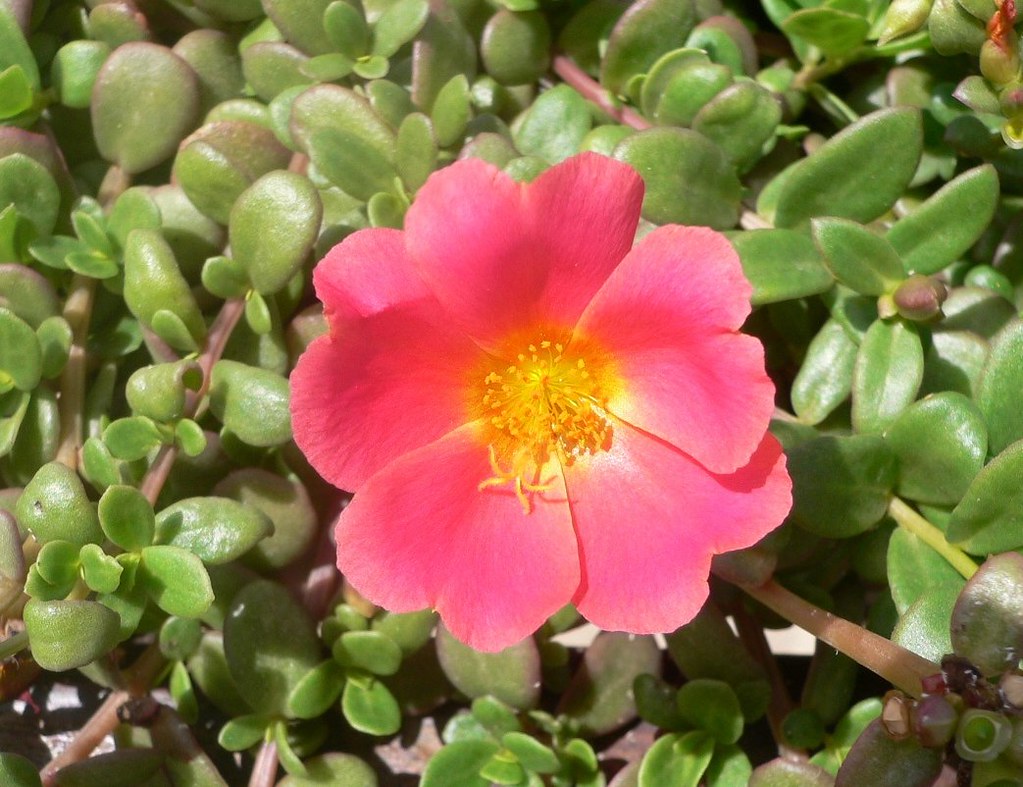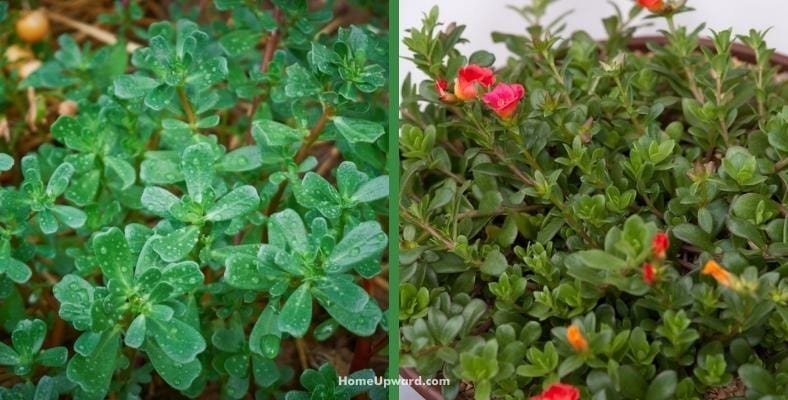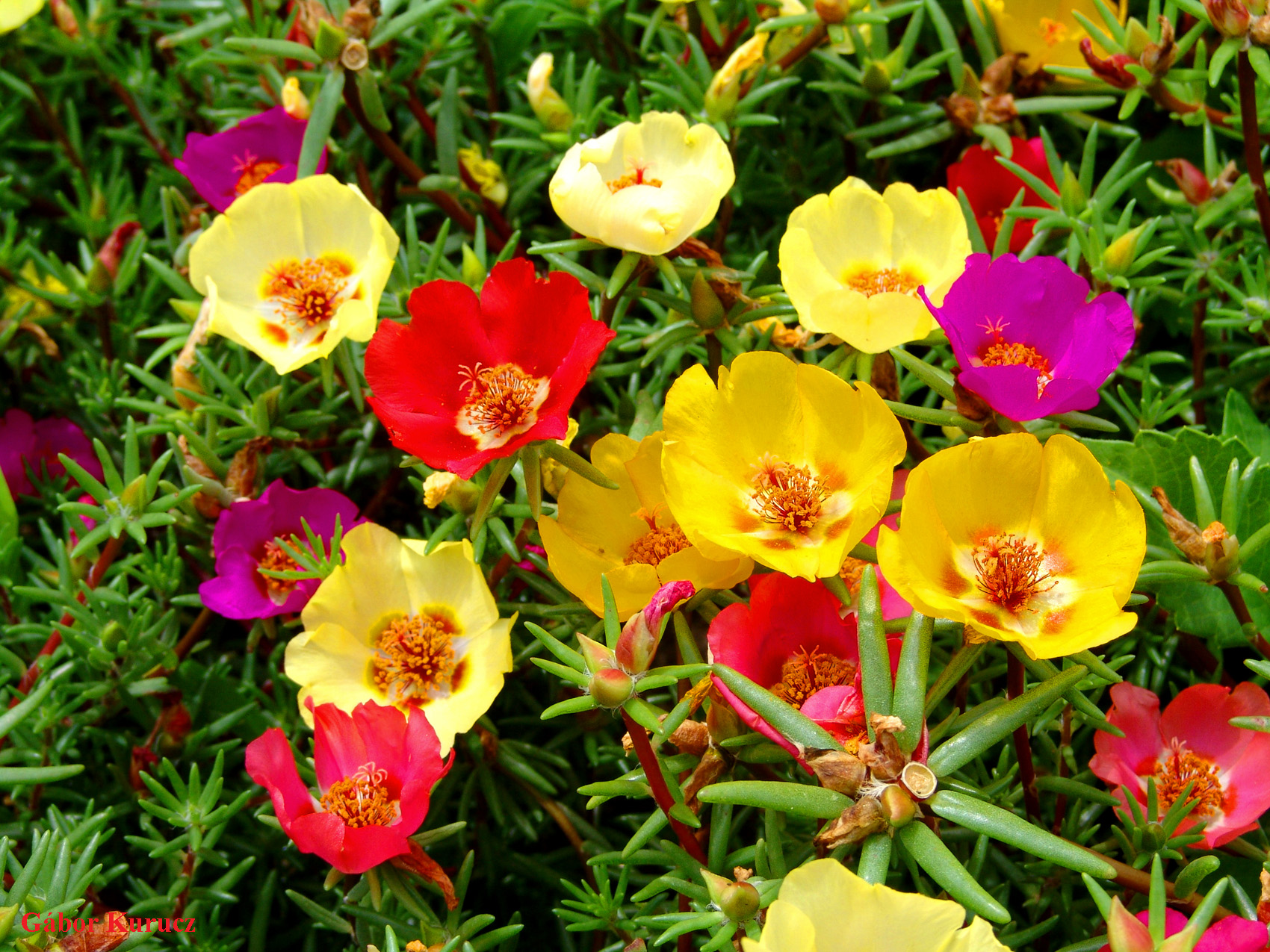Understanding the Basics: Portulaca Plant Characteristics
The Portulaca plant, also known as purslane or moss rose, is a popular groundcover known for its succulent leaves and vibrant flowers. Native to warm temperate and tropical regions, this plant has adapted to various environments, making it a favorite among gardeners worldwide. The debate surrounding the Portulaca plant’s annual or perennial nature highlights the intriguing complexity of its growth habits.
Portulaca Plant: Annuals or Perennials? Unraveling the Confusion
To understand the Portulaca plant’s annual or perennial nature, it is essential to distinguish between these two categories. An annual plant completes its life cycle within a single year, from germination to producing seeds. In contrast, a perennial plant lives for more than two years, often going dormant in winter and regrowing in spring. The Portulaca plant can be both, depending on various factors.
The Portulaca plant’s lifespan is influenced by climate, care, and specific varieties. In colder regions, the plant is often treated as an annual because it cannot withstand freezing temperatures. However, in warmer climates, it can survive winters and behave as a perennial. Proper care, such as providing adequate water, well-draining soil, and ample sunlight, can also contribute to the Portulaca plant’s perennial growth.
Moreover, different Portulaca species have varying growth habits. For instance, Portulaca grandiflora, commonly known as moss rose, is typically grown as an annual due to its delicate stems and limited cold tolerance. On the other hand, Portulaca oleracea, or common purslane, is a hardy perennial in warmer climates, appreciated for its edible leaves and succulent nature.
Portulaca Plant Varieties: A Key Factor in Classification
Portulaca plants encompass a diverse range of species, each with unique growth habits and regional adaptations that influence their categorization as annuals or perennials. Two prominent examples are Portulaca grandiflora and Portulaca oleracea.
Portulaca grandiflora, commonly known as moss rose, is a popular ornamental plant appreciated for its showy, vibrant flowers. This species is typically grown as an annual due to its delicate stems and limited cold tolerance. However, in frost-free climates, it can behave as a perennial, adding a splash of color to gardens year-round.
On the other hand, Portulaca oleracea, or common purslane, is a hardy perennial in warmer climates. This succulent plant is often found growing wild in fields and along roadsides, thriving in various soil types and conditions. Purslane is valued for its edible leaves, rich in omega-3 fatty acids and other nutrients, making it a valuable addition to both gardens and diets.
Portulaca Plant in Different Climates: Annual vs. Perennial
Climate plays a significant role in determining the Portulaca plant’s annual or perennial nature. Factors such as temperature, humidity, and sunlight directly influence its growth patterns, allowing it to thrive in various environments.
In colder climates, Portulaca plants are often treated as annuals due to their susceptibility to freezing temperatures. These plants prefer warm conditions, with temperatures between 70°F and 85°F (21°C and 29°C) during the day and slightly cooler temperatures at night. Prolonged exposure to frost can damage the plant, limiting its ability to survive as a perennial.
Conversely, in warmer regions, Portulaca plants can behave as perennials, exhibiting resilience and adaptability. They thrive in full sun and well-draining soil, making them suitable for various landscapes, including rock gardens, containers, and groundcovers. In these environments, the plants can maintain their growth and regrow each year, providing long-lasting beauty and benefits.
How to Care for Portulaca Plants: Encouraging Perennial Growth
Proper care is crucial for Portulaca plants to thrive and potentially behave as perennials. By providing the right conditions, gardeners can enjoy the beauty and benefits of these plants for an extended period.
First, ensure that your Portulaca plants receive ample sunlight, as they require at least six hours of direct sunlight daily. This will promote healthy growth and flowering. Additionally, use well-draining soil, as these plants are susceptible to root rot in poorly drained conditions. A sandy or loamy soil mixture is ideal.
Watering is another critical aspect of Portulaca care. These plants are drought-tolerant and prefer minimal watering. Overwatering can lead to root rot and other issues, potentially limiting the plant’s ability to survive as a perennial. Allow the soil to dry out between waterings, and avoid watering the foliage to prevent fungal diseases.
Lastly, fertilize your Portulaca plants sparingly, as they are adapted to low-nutrient environments. A light application of a balanced, water-soluble fertilizer during the growing season can support healthy growth without overwhelming the plant.
Portulaca Plant Propagation Techniques: Extending Its Lifespan
Portulaca plant propagation methods can help increase the chances of the plant growing as a perennial and extend its lifespan. By employing these techniques, gardeners can enjoy the beauty of their Portulaca plants for multiple seasons.
One common propagation method is seed collection. Allow the Portulaca plant’s flowers to dry on the stem, and then gently remove the seedpods. The small, black seeds can be stored in a cool, dry place until the next planting season. Sowing seeds directly outdoors in spring or starting them indoors six to eight weeks before the last frost date can help establish new plants.
Stem cuttings are another effective propagation technique for Portulaca plants. Choose healthy, non-flowering stems and cut them into 2- to 3-inch (5- to 7.5-cm) segments. Allow the cuttings to dry for a day or two, and then insert them into a well-draining soil mix. Rooting hormone can be applied to the cut ends to promote root growth. Keep the cuttings in a warm, bright location until they establish roots and new growth appears.
Lastly, division is a propagation method that can be employed for mature Portulaca plants. Carefully dig up the plant, ensuring that the root ball remains intact. Divide the roots into several sections using a clean, sharp knife. Replant the divisions into well-prepared soil, spacing them appropriately for optimal growth. This method can help rejuvenate older plants and encourage perennial behavior.
Portulaca Plant: Balancing Annual and Perennial Qualities
The Portulaca plant’s annual or perennial nature is influenced by several key factors, including climate, care, and varieties. Understanding these factors can help gardeners encourage perennial behavior and enjoy the plant’s beauty for multiple seasons.
Climate plays a significant role in determining the Portulaca plant’s lifespan. In colder climates, the plant is often treated as an annual due to its susceptibility to freezing temperatures. However, in warmer regions, it can behave as a perennial, exhibiting resilience and adaptability. Proper care, including adequate watering, well-draining soil, and ample sunlight, can also contribute to the plant’s perennial growth.
Additionally, different Portulaca species have varying growth habits and regional adaptations that influence their categorization as annuals or perennials. For example, Portulaca grandiflora, commonly known as moss rose, is typically grown as an annual due to its delicate stems and limited cold tolerance. In contrast, Portulaca oleracea, or common purslane, is a hardy perennial in warmer climates, appreciated for its edible leaves and succulent nature.
By considering these factors and employing appropriate care techniques, gardeners can strike a balance between the Portulaca plant’s annual and perennial qualities, ensuring its continued growth and enjoyment in their gardens.
Conclusion: Portulaca Plant – A Versatile Addition to Any Garden
The Portulaca plant, with its origins and succulent nature, has garnered popularity as a groundcover due to its adaptability and versatility. The annual vs. perennial debate surrounding this plant highlights the importance of understanding its growth habits and the factors that influence its lifespan.
Climate, care, and varieties all play a role in determining whether a Portulaca plant will behave as an annual or perennial. By providing proper care, including appropriate watering, well-draining soil, and ample sunlight, gardeners can encourage perennial growth and enjoy the plant’s beauty for multiple seasons. Additionally, understanding the differences between Portulaca species, such as moss rose and common purslane, can help gardeners make informed decisions when selecting plants for their gardens.
Various propagation methods, including seed collection, stem cuttings, and division, can further increase the chances of the Portulaca plant growing as a perennial and extend its lifespan. By experimenting with these techniques and different care approaches, gardeners can strike a balance between the plant’s annual and perennial qualities, ensuring its continued growth and enjoyment in their gardens.





/growing-portulaca-1315707-07-fcedb238ff2c40edac49a127aa99fab0.jpg)


